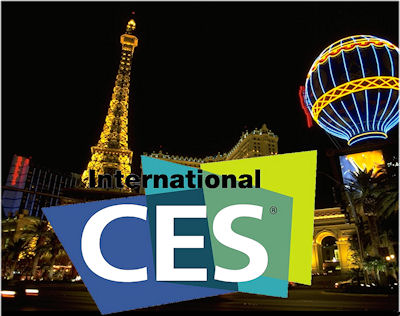This week saw the Consumer Electronics Show in Las Vegas, an event where the world’s biggest electronics manufacturers (with a few exceptions) get to mingle and show off their new innovations for the year ahead, but where small and slightly weird firms can also get a big audience.
CES 2015 was no exception, with many new and exciting items on display. But who came off best at the show?
Get connected
As noted in my preview article last week, the Internet of Things was a major theme at this year’s CES, as manufacturers tried to get their goods and services connected. Nest led the way by announcing even more functions for its smart thermostat, including smart door locking and power regulation, which should help consumers save money and conserve energy.
 Cars also became both more connected and more interactive, with Audi, BMW and Mercedes all showing off autonomous driving concepts which prove that the future of driving can be both safe and enjoyable.
Cars also became both more connected and more interactive, with Audi, BMW and Mercedes all showing off autonomous driving concepts which prove that the future of driving can be both safe and enjoyable.
But there was also an underlying sense that more needs to be done to ensure the IoT breaks out of its current quasi-novelty niche. Samsung’s CEO, BK Yoon (pictured above) led the appeal by calling for more collaboration and co-operation between technology companies to ensure more inter-connectivity, a theme which most businesses would do well to echo.
Going mobile
As for the items themselves, CES 2015 saw the usual range of smartphones, tablets and laptops, with a few stand-out exceptions.
 With many of the major manufacturers choosing to delay announcements for their own events, CES was a good time for other phone makers to show off their wares. Asus’ ZenFone 2 and ZenFone Zoom (pictured right) brought high-end specifications and superpowered camera functionality into the price range of many consumers, and LG drew lots of envious glances with the G Flex 2, its second-generation curved-screen smartphone.
With many of the major manufacturers choosing to delay announcements for their own events, CES was a good time for other phone makers to show off their wares. Asus’ ZenFone 2 and ZenFone Zoom (pictured right) brought high-end specifications and superpowered camera functionality into the price range of many consumers, and LG drew lots of envious glances with the G Flex 2, its second-generation curved-screen smartphone.
But there were also big strides made in hardware. Nvidia announced the X1, its most powerful mobile processor to date, packing in eight ARM CPU cores, which should mean phones can get faster than ever before. Saygus raised eyebrows with a smartphone sporting 320GB of internal storage, proving that storage is getting cheaper and smaller than ever before, and Storedot showed off a potentially revolutionary battery which can be fully recharged from flat in a matter of minutes.
Looking forward
Away from mobiles, wearables were unsurprisingly another big focus at CES, with more devices on show than ever before. Sony unveiled the third generation of its SmartWatch, a significant statement of intent from the electronics giant, and Alcatel raised eyebrows with another smartwatch which will run both iOS and Android.

But there were also signs of a more powerful future for wearables courtesy of Intel, which unveiled its Curie processor (pictured left), which has been especially designed for such devices. Rival mobile chipmaker Qualcomm also signalled its backing for the wearable sector, which both say is set for significant growth over the next few years.
So it’s goodbye to CES for another year, with all kinds of innovation on show, and if what we saw in Las Vegas was anything to go by, 2015 promises to be an extremely exciting year for technology.
What else do you remember about CES 2015? Try our all-new quiz!





